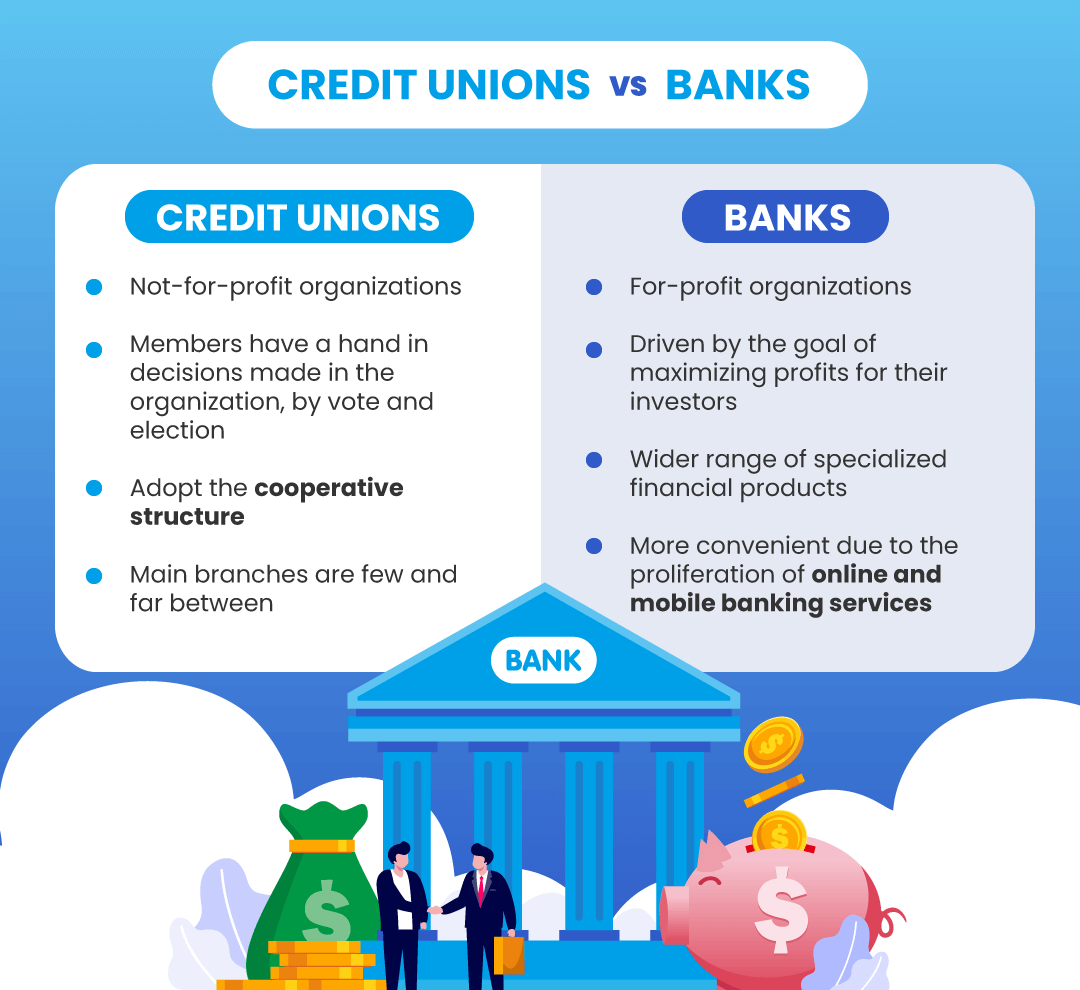Hybrid Line of Credit: Innovative Financial Products from Wyoming Credit Unions
Hybrid Line of Credit: Innovative Financial Products from Wyoming Credit Unions
Blog Article
The Ultimate Overview to Comprehending Lending Institution
Cooperative credit union stand as distinct financial entities, rooted in concepts of mutual assistance and member-driven operations. Nonetheless, beyond their fundamental values, recognizing the complex workings of lending institution includes a much deeper exploration. Cheyenne Federal Credit Union. Unraveling the intricacies of membership qualification, the evolution of solutions provided, and the unique benefits they bring needs a thorough evaluation. As we browse via the complexities of debt unions, an insightful trip waits for to clarify these member-focused organizations and just how they differ from standard banks.
What Are Lending Institution?
Cooperative credit union are member-owned banks that offer a series of banking services to their members. Unlike traditional financial institutions, credit report unions operate as not-for-profit organizations, suggesting their key focus gets on offering their members rather than making the most of revenues. Participants of a credit history union usually share a common bond, such as helping the exact same employer, coming from the exact same community, or becoming part of the exact same organization.
Among the crucial benefits of lending institution is that they usually use higher rate of interest on savings accounts and reduced rate of interest rates on financings contrasted to banks. This is because cooperative credit union are structured to profit their members straight, allowing them to hand down their incomes in the form of far better rates and less costs. Furthermore, cooperative credit union are understood for their personalized consumer service, as they prioritize constructing connections with their participants to comprehend their unique monetary demands and goals.
Background and Advancement of Cooperative Credit Union

The origins of member-owned economic cooperatives, recognized today as credit unions, trace back to a time when areas looked for options to conventional banking institutions. The concept of cooperative credit union come from the 19th century in Europe, with Friedrich Wilhelm Raiffeisen often credited as the leader of the cooperative financial motion (Cheyenne Credit Unions). Raiffeisen established the first identified lending institution in Germany in the mid-1800s, highlighting community assistance and self-help principles
The evolution of cooperative credit union proceeded in The United States and copyright, where Alphonse Desjardins established the first lending institution in copyright in 1900. Shortly after, in 1909, the first U.S. debt union was formed in New Hampshire by a team of Franco-American immigrants. These early lending institution operated on the essential concepts of shared assistance, autonomous control, and participant ownership.
In time, Federal Credit Union cooperative credit union have actually grown in popularity worldwide as a result of their not-for-profit structure, focus on offering participants, and offering competitive economic services and products. Today, credit unions play a crucial duty in the financial industry, supplying available and community-oriented financial options for companies and people alike.
Membership and Eligibility Criteria
Subscription at a credit history union is typically limited to people fulfilling specific eligibility criteria based on the institution's beginning principles and regulatory demands. Some credit history unions might only serve people that live or work in a certain location, while others might be tailored to workers of a particular company or members of a specific association.
In addition, credit unions are structured as not-for-profit companies, implying that their key goal is to offer their members as opposed to generate revenues for shareholders. This concentrate on participant solution often converts into even more individualized focus, reduced costs, and competitive passion prices on financial savings and lendings accounts. By satisfying the eligibility standards and coming to be a member of a cooperative credit union, people can access an array of economic product or services customized to their details needs.
Services and Products Used
One of the crucial elements that sets credit scores unions apart is the varied array of economic solutions and items they offer to their participants. Debt unions generally supply standard financial solutions such as cost savings and examining accounts, financings, and credit scores cards.
Additionally, cooperative credit union commonly provide convenient online and mobile financial options for participants to easily manage their finances. They may supply perks such as shared branching, allowing members to access their accounts at other credit score unions throughout the country. Some lending institution also give insurance coverage items like automobile, home, and life insurance policy to aid members protect their possessions and enjoyed ones.
Along with monetary services, lending institution regularly involve in neighborhood outreach programs and economic education initiatives to support their participants in accomplishing their monetary goals.
Benefits of Financial With Cooperative Credit Union
When taking into consideration monetary organizations, exploring the benefits of financial with credit scores unions discloses special advantages for participants looking for customized solution and affordable prices. Unlike huge financial institutions, credit history unions are member-owned and prioritize structure strong relationships with their members. In general, banking with a credit rating union can give a much more tailored, economical, and member-centric financial experience.
Conclusion

Credit report unions are member-owned economic organizations that use a variety of banking services to their members. The principle of debt unions come from in the 19th century in Europe, with Friedrich Wilhelm Raiffeisen frequently credited as the pioneer of the participating banking movement.The evolution of debt unions proceeded in North America, where Alphonse Desjardins established the very first credit union in copyright in 1900. Credit score unions generally give conventional banking services such as cost savings and examining accounts, finances, and debt cards.When considering monetary organizations, exploring the advantages of banking with debt unions discloses one-of-a-kind advantages for participants seeking individualized service and competitive prices.
Report this page